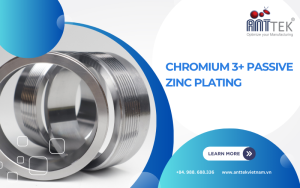Handling Backlash Errors in CNC – Causes, Solutions, and Minimization Strategies for Backlash Errors
In the precision manufacturing field, CNC processes are among the most reliable and efficient methods for producing complex parts with high accuracy. However, despite the advanced capabilities of CNC machines, backlash errors can still occur, posing challenges to achieving desired accuracy and quality of the final product.
Identifying Backlash Errors in CNC Machining
Backlash errors in machining refer to unwanted edges or lines formed during material removal processes such as drilling, milling, or turning. They often arise due to factors such as tool wear, improper tool geometry, high cutting speeds, or inadequate cooling and lubrication. These small protrusions may seem insignificant but can impair the functionality of parts, affecting dimensional accuracy and hindering subsequent assembly processes.
Causes Leading to Backlash Errors in CNC
Tool Wear
Over time, cutting tools used in CNC machining wear down, leading to reduced cutting efficiency and increased likelihood of errors, especially at edges with high tool adhesion.
Feed Rate
Incorrect feed rates or cutting speeds can result in inadequate material removal or excessive tool pressure, causing uneven surfaces and imperfect edges.
Material Properties
Changes in hardness, density, and composition of materials can impact machining processes, causing inconsistencies in surface finish.
Suboptimal Tool Path Optimization
Poorly optimized tool paths can subject certain areas to excessive cutting force or tool deflection, exacerbating backlash errors.
Methods to Handle Backlash Errors in CNC
Three-point Cutting Tools
Manual or automated three-point cutting tools, such as rotary files, abrasive brushes, or edge-breaking tools, are commonly used to remove burrs from machined parts. These tools carefully flatten edges and rough contours, restoring dimensional accuracy and surface finish.
Vibratory Finishing
Vibratory finishing involves placing machined parts in a vibrating chamber with abrasive media and specialized compounds. The abrasive action polishes parts, removing burrs and surface defects, leaving a shiny finish.
Chemical Deburring
Chemical deburring processes use selective chemical solutions to dissolve burrs without affecting the base material. This method is particularly useful for complex or hard-to-access shapes where mechanical deburring may be challenging.
Thermal Deburring
Thermal deburring, also known as explosive deburring, relies on controlled detonation within a sealed chamber to dislodge burrs. The rapid expansion of gas upon ignition effectively removes burrs without damaging the part surface.
Laser Burr Removal Laser technology offers a precise and non-contact method for removing burrs. By focusing a laser beam on the cutting edge, heat is generated, causing the burr to vaporize or melt away, leaving a clean edge.
Strategies to Minimize Backlash Errors Post-QC
Tool Management
Regular inspection and maintenance of cutting tools are essential to detect signs of wear and replace them before performance deteriorates. Using high-quality tool materials and coatings can also extend tool life and reduce the risk of backlash errors.
Optimized CNC Machining Parameters
Fine-tuning cutting parameters such as feed rates, cutting speeds, and depth based on material characteristics and part geometry can enhance machining efficiency while minimizing the likelihood of backlash errors. Advanced CAM software allows for simulation and optimization of tool paths to achieve optimal results.
Coolants and Lubricants
Using appropriate coolants and lubricants during machining not only dissipates heat and reduces friction but also improves chip evacuation and surface gloss, minimizing edge defect risks.
Tool Path Optimization
Employing advanced machining strategies like adaptive machining and high-speed machining can optimize tool paths to evenly distribute cutting forces, reduce stress concentrations at edges, and minimize errors.
Quality Assurance
Implementing rigorous quality inspection and control measures throughout the production process, including post-machining inspection with precise measuring equipment, ensures that parts meet specified tolerances and surface finish standards.
Addressing backlash errors in CNC machining is crucial for delivering high-quality parts that meet or exceed customer expectations. By understanding the root causes of backlash errors and implementing proactive minimization strategies, manufacturers can optimize their CNC processes to consistently produce parts with tight tolerances and perfect surface finishes.

















